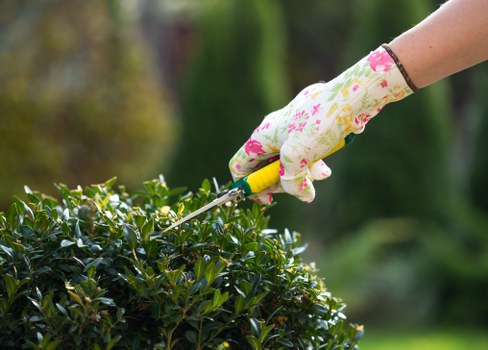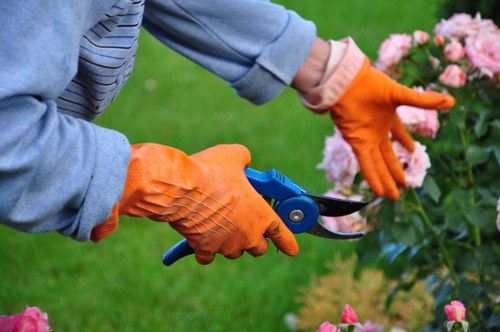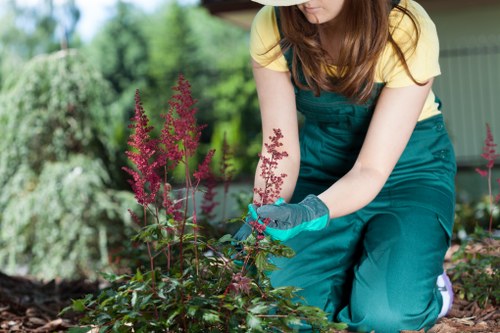Hedge Trimming in Dulwich
 Hedge trimming is an essential aspect of maintaining a beautiful and healthy garden in Dulwich. Whether you're a seasoned gardener or a novice, understanding the best practices for trimming hedges can make a significant difference in the appearance and longevity of your plants.
Hedge trimming is an essential aspect of maintaining a beautiful and healthy garden in Dulwich. Whether you're a seasoned gardener or a novice, understanding the best practices for trimming hedges can make a significant difference in the appearance and longevity of your plants.
Proper hedge maintenance not only enhances the aesthetic appeal of your property but also promotes the health of the plants by preventing overgrowth and ensuring adequate light penetration. In Dulwich, where gardens are a prominent feature of many homes, mastering the art of hedge trimming is particularly beneficial.
There are various types of hedges, each requiring different trimming techniques. From formal box hedges to informal mixed hedges, knowing how to approach each type will help you achieve the desired look and maintain plant health.
Importance of Regular Hedge Trimming
 Regular trimming of hedges in Dulwich provides numerous benefits. It encourages dense growth, prevents disease by reducing overcrowding, and maintains the shape and size of the hedge according to your preferences.
Regular trimming of hedges in Dulwich provides numerous benefits. It encourages dense growth, prevents disease by reducing overcrowding, and maintains the shape and size of the hedge according to your preferences.
Neglecting hedge maintenance can lead to unruly growth, making it difficult to manage and potentially affecting the overall landscape of your garden. In addition, well-maintained hedges can significantly increase the curb appeal of your home.
Moreover, hedges serve as a natural barrier, providing privacy and reducing noise pollution. Keeping them trimmed ensures they remain effective in these roles without becoming obstructive or overbearing.
Choosing the Right Tools for Hedge Trimming
 Selecting the appropriate tools is crucial for effective hedge trimming. Depending on the size and type of your hedges in Dulwich, you may require different equipment.
Selecting the appropriate tools is crucial for effective hedge trimming. Depending on the size and type of your hedges in Dulwich, you may require different equipment.
- Manual Shears: Ideal for small, intricate hedges and precision work.
- Electric or Gas-Powered Trimmers: Suitable for larger hedges, offering greater efficiency and ease of use.
- Hedge Clippers: Perfect for light trimming and shaping.
Investing in quality tools not only makes the trimming process easier but also ensures clean cuts that promote faster healing and growth for your hedges.
Best Practices for Hedge Trimming
 To achieve the best results, follow these hedge trimming best practices:
To achieve the best results, follow these hedge trimming best practices:
- Timing: Trim hedges during the growing season, typically in late spring or early summer, to encourage healthy growth.
- Shaping: Aim for a natural shape that complements your garden's design, avoiding overly harsh lines unless a formal look is desired.
- Technique: Make clean, angled cuts to prevent water accumulation and reduce the risk of disease.
Consistency is key. Regular trimming throughout the year helps maintain the desired shape and health of your hedges.
Seasonal Considerations for Hedge Maintenance
 Different seasons require different approaches to hedge trimming in Dulwich:
Different seasons require different approaches to hedge trimming in Dulwich:
- Spring: Focus on shaping and light trimming to prepare for the growing season.
- Summer: Conduct regular maintenance to control growth and address any damage from heat or pests.
- Autumn: Perform final trims to tidy up the hedges before winter, removing any weak or diseased branches.
- Winter: Minimal trimming is necessary, but inspect hedges for damage and plan for the next growing season.
Adapting your trimming schedule to the seasons ensures your hedges remain healthy and vibrant year-round.
Hiring Professional Hedge Trimming Services in Dulwich
 While DIY hedge trimming is feasible for smaller gardens, larger properties or more intricate hedges may benefit from professional services.
While DIY hedge trimming is feasible for smaller gardens, larger properties or more intricate hedges may benefit from professional services.
Professional gardeners in Dulwich have the expertise and equipment to handle various hedge types efficiently. They can offer tailored advice and ensure that your hedges are maintained to the highest standards.
Additionally, hiring professionals can save you time and effort, allowing you to enjoy a beautifully maintained garden without the physical strain of extensive trimming.
